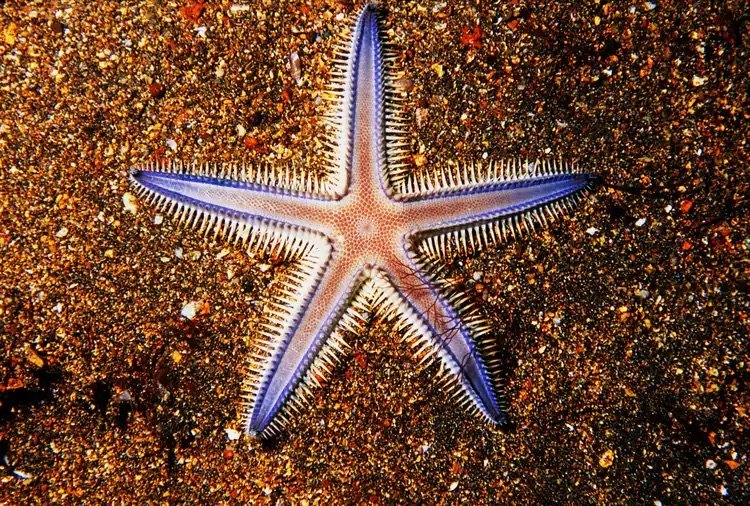Sea Star Arms: An Exciting New Revelation
Photo Credit: Ed Robinson/Getty Images via ThoughtCo
Sea stars may seem to have a plethora of limbs, but new discoveries reveal that their “arms” are more like extensions of their head. These sea creatures are some of the most fascinating in the world. They have no blood or brains and eat by vomiting out their stomach and swallowing their prey in it. Several sea stars have the ability to regenerate lost body parts or even create a new sea star from one of their “arms”. For years, scientists have been puzzled over the anatomy of these strange creatures. Sea stars, with no recognizable head, were thought to not have one. But new research published on Nov. 1 in the journal Nature reveals the complete opposite.
Sea stars have a pentaradial body plan, which means they can be divided into five equal segments. Experts have long wondered how echinoderms — animals including sea urchins, sand dollars, and sea stars with pentaradial symmetry — evolved from animals with a bilateral body plan, which is common in animals such as insects, molluscs, vertebrates, and humans.
Over the years, scientists have come up with several hypotheses that could explain the odd bodies of sea stars. One such hypothesis is the duplication hypothesis, which suggests that echinoderms retained a bilateral body plan similar to their ancestors and multiplied it, with each arm exhibiting a bilateral form similar to its relatives. The anterior — the head region — is located in the center of the body, and the arms are five posterior regions stretching outward.
Another hypothesis called the stacking hypothesis suggests that the posterior region is located at the top of the sea star, and the rest of the creature’s body is stacked underneath, with the anterior at the bottom.
In the new study, researchers suggest that neither of these hypotheses are correct. Instead, sea stars and other echinoderms lost their trunks over time. Now, their body is their head.
To work out the anatomy of a sea star and locate its head, researchers ran several genetic tests on Patiria miniata — bat stars — to conclude which types of genes were present in each area of the creature’s body.
"We made slices of the sea star and sequenced each slice to construct a 3D model of the messenger RNA [mRNA] across the body," head researcher and author Laurent Formery told Live Science.
To observe the mRNA and identify where it was located in the bat stars’ bodies, the researchers used fluorescent dye to highlight specific types of mRNA.
If the duplication hypothesis was true, the anterior genes would be found at the tips of the sea star’s arms, and if the stacking hypothesis was true, the anterior genes would be located at the top center part of the creature’s body. Neither one of the hypotheses turned out to be true. "We found that anterior genes are expressed all the way to the tip of the arms," said Formery.
The researchers also compared the genes in the head region of Saccoglossus kowalevskii, a type of acorn worm closely related to sea stars. The researchers found that the genes “switched on” in the head area of the acorn worms were present in the sea stars’ skin, which covers the sea stars’ entire bodies.
The posterior genes were located near the very perimeter of the sea stars’ arms. Essentially, sea stars lack the genetic patterning for a trunk (or torso) of bilaterians.
"Although a slight oversimplification, the findings suggest that one could think of the body of a starfish (at least in terms of the anterior–posterior identity of its surface tissues) as a disembodied head walking about the sea floor on its lips — the lips having sprouted a fringe of tube feet, co-opted from their original function of sorting food particles, to do the walking," Thurston Lacalli, a biologist from the University of Saskatchewan, told Live Science.

